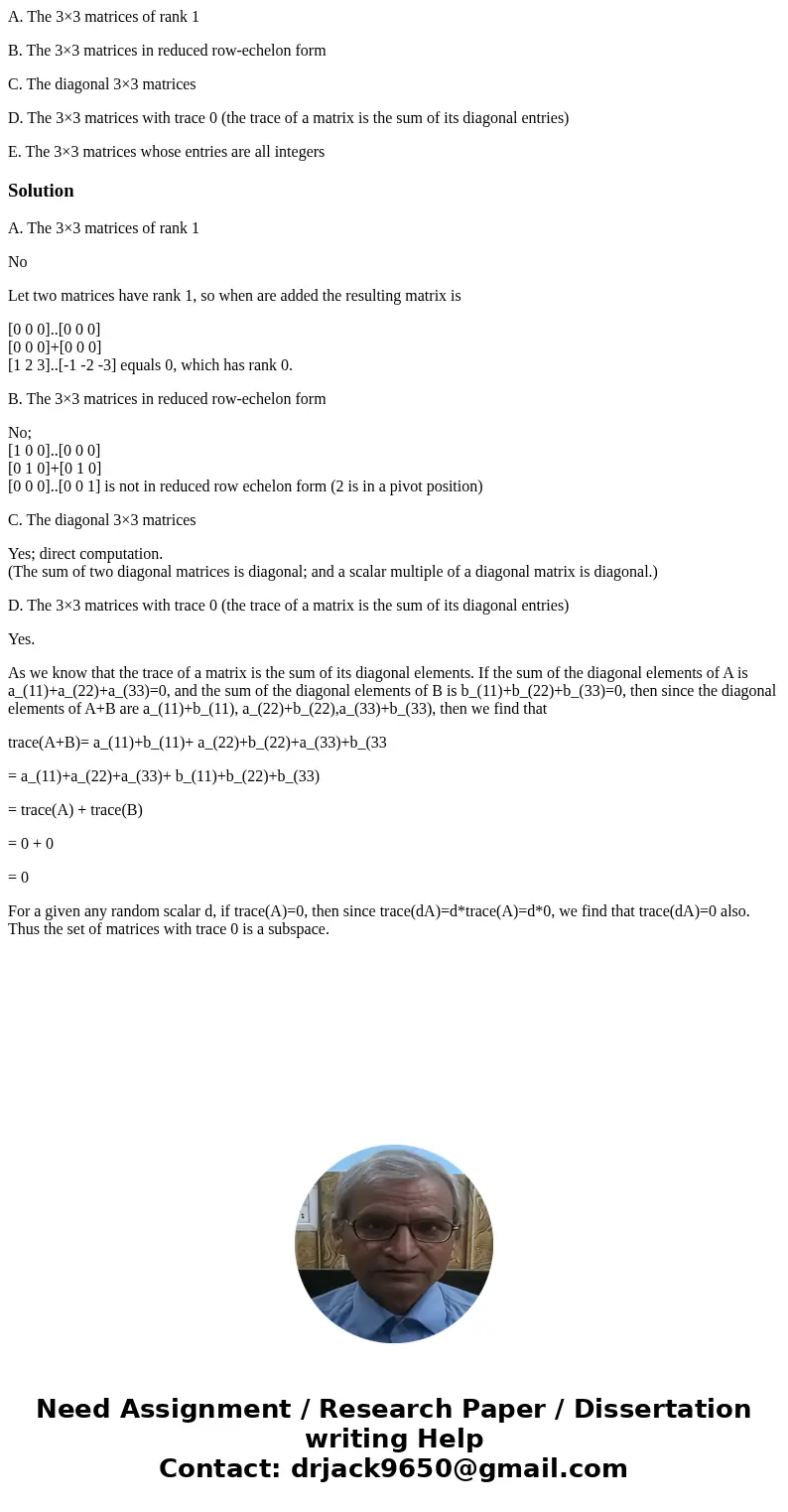A The 33 matrices of rank 1 B The 33 matrices in reduced row
A. The 3×3 matrices of rank 1
B. The 3×3 matrices in reduced row-echelon form
C. The diagonal 3×3 matrices
D. The 3×3 matrices with trace 0 (the trace of a matrix is the sum of its diagonal entries)
E. The 3×3 matrices whose entries are all integers
Solution
A. The 3×3 matrices of rank 1
No
Let two matrices have rank 1, so when are added the resulting matrix is
[0 0 0]..[0 0 0]
[0 0 0]+[0 0 0]
[1 2 3]..[-1 -2 -3] equals 0, which has rank 0.
B. The 3×3 matrices in reduced row-echelon form
No;
[1 0 0]..[0 0 0]
[0 1 0]+[0 1 0]
[0 0 0]..[0 0 1] is not in reduced row echelon form (2 is in a pivot position)
C. The diagonal 3×3 matrices
Yes; direct computation.
(The sum of two diagonal matrices is diagonal; and a scalar multiple of a diagonal matrix is diagonal.)
D. The 3×3 matrices with trace 0 (the trace of a matrix is the sum of its diagonal entries)
Yes.
As we know that the trace of a matrix is the sum of its diagonal elements. If the sum of the diagonal elements of A is a_(11)+a_(22)+a_(33)=0, and the sum of the diagonal elements of B is b_(11)+b_(22)+b_(33)=0, then since the diagonal elements of A+B are a_(11)+b_(11), a_(22)+b_(22),a_(33)+b_(33), then we find that
trace(A+B)= a_(11)+b_(11)+ a_(22)+b_(22)+a_(33)+b_(33
= a_(11)+a_(22)+a_(33)+ b_(11)+b_(22)+b_(33)
= trace(A) + trace(B)
= 0 + 0
= 0
For a given any random scalar d, if trace(A)=0, then since trace(dA)=d*trace(A)=d*0, we find that trace(dA)=0 also. Thus the set of matrices with trace 0 is a subspace.

 Homework Sourse
Homework Sourse